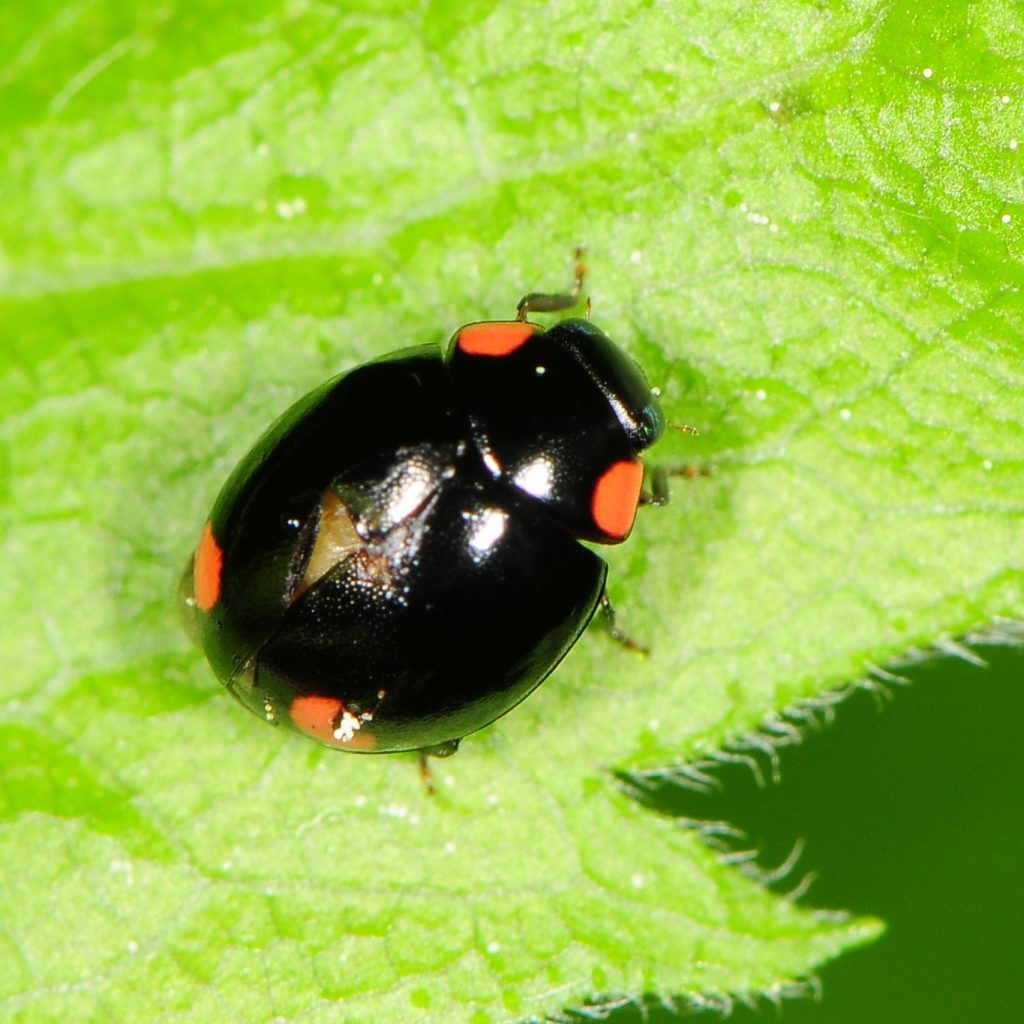
Bigeminate Sigil Lady Beetle © Jason Michael Crockwell
The Bigeminate Sigil Lady Beetle is native to North America. This species is usually found in deciduous forests. Each wing cover is black with one large yellow or red spot towards its back end.
Status
Native
Not ranked in the United States. Ranked as Secure in Nova Scotia and New Brunswick.
Last Seen
2021
Fun Fact
The Bigeminate Sigil Lady Beetle’s species name (bigeminata) means “double twin spotted”.
Identification
The Bigeminate Sigil Lady Beetle is 2.3 to 3.4 mm in length.
- Entirely black beetle, except for a central patch on the head, two lateral spots on the pronotum (one on each side), and one spot on the posterior end of each elytron.
- The spots are light orange to red in color.
- The elytra are lightly pitted, as if they were pricked with pins.
- Often confused with other lady beetles in the Hyperaspis genus and Spurleg Lady Beetles.
Habitat
Associated with deciduous forests. Has been found to prey on the invasive crapemyrtle bark scale. In Novia Scotia, the Bigeminate Sigil Lady Beetle has been found exclusively in flying traps in deciduous forests.
General Range
Midwestern through eastern United States, north into Canada.
Food
Scale insects and mealybugs, particularly those on trees.
Life History
Seems to be most abundant in early summer. One study found that an outbreak of a scale insect, the oak eriococcid (Eriococcid quercus), during 1995 was accompanied by an unusually large number of Bigeminate Sigil Lady Beetles, which may indicate that these lady beetles respond quickly to changes in prey populations. The Bigeminate Sigil Lady Beetle seems to be highly sensitive to biopesticide use. Little is known about these insects.
More Information
You can find more information about Bigeminate Sigil Lady Beetles using the following links:
Vermont Distribution
Visit the iNaturalist Observation Map or the Occurrence Records to find out where Bigeminate Sigil Lady Beetles have been seen in Vermont.








